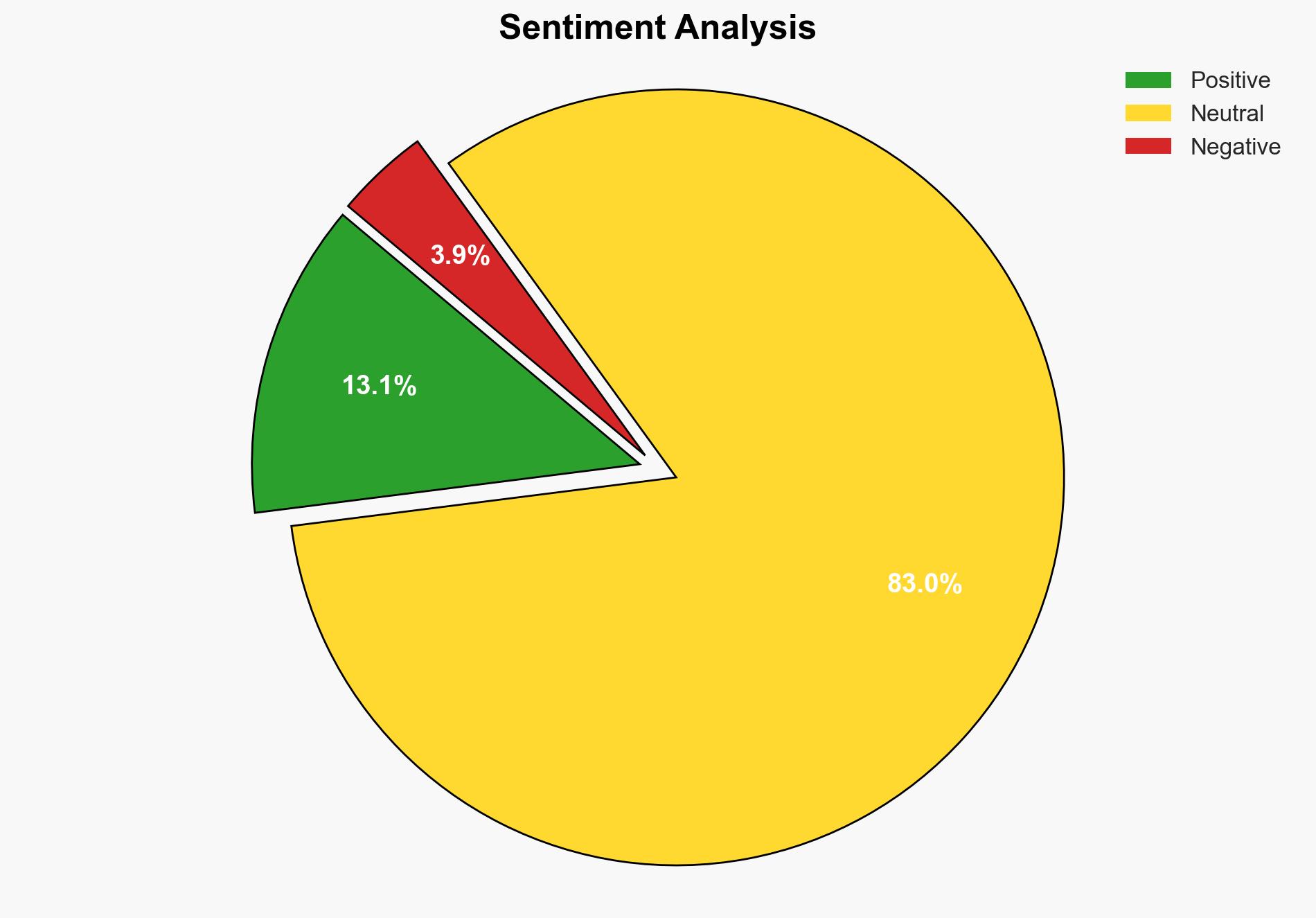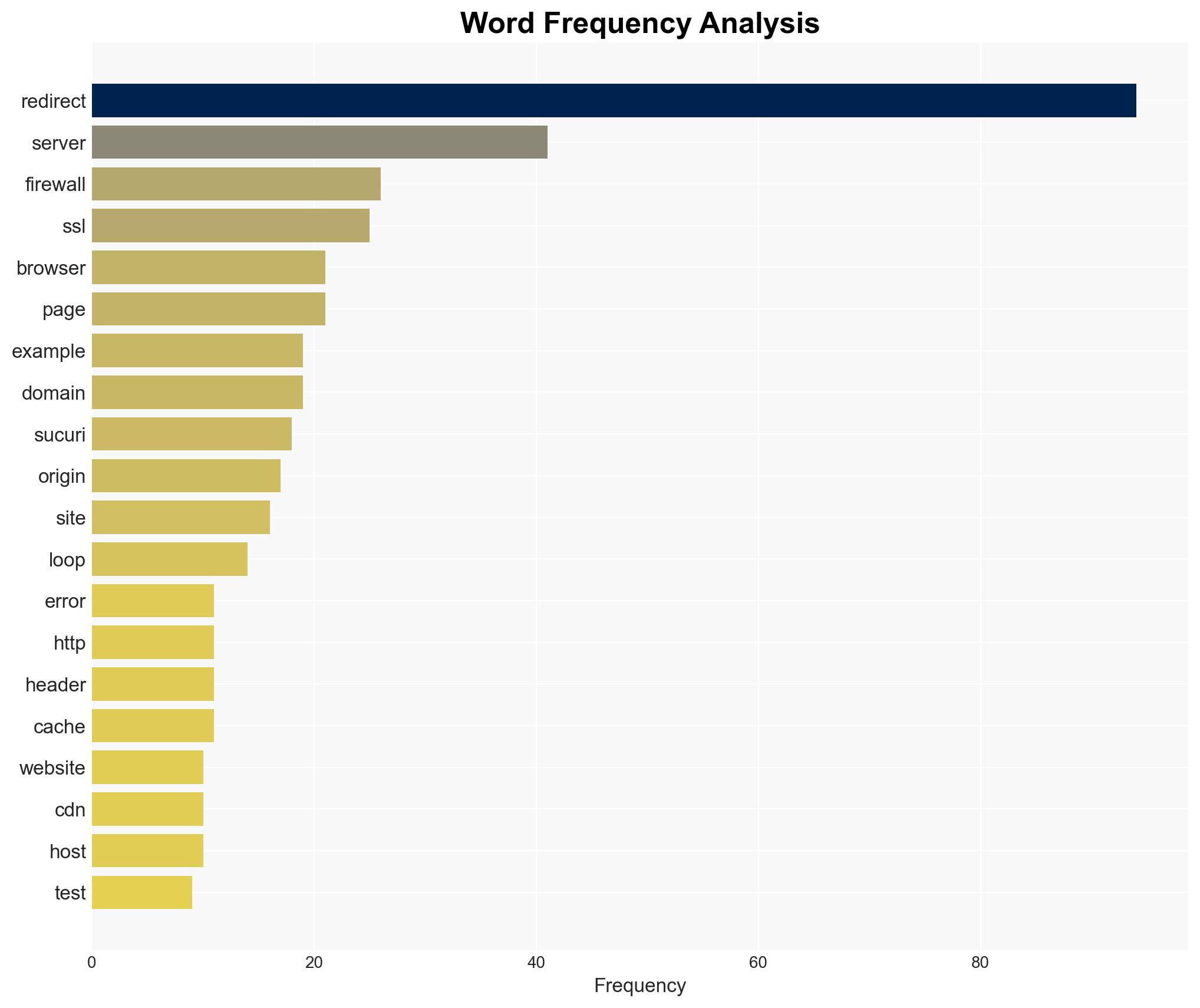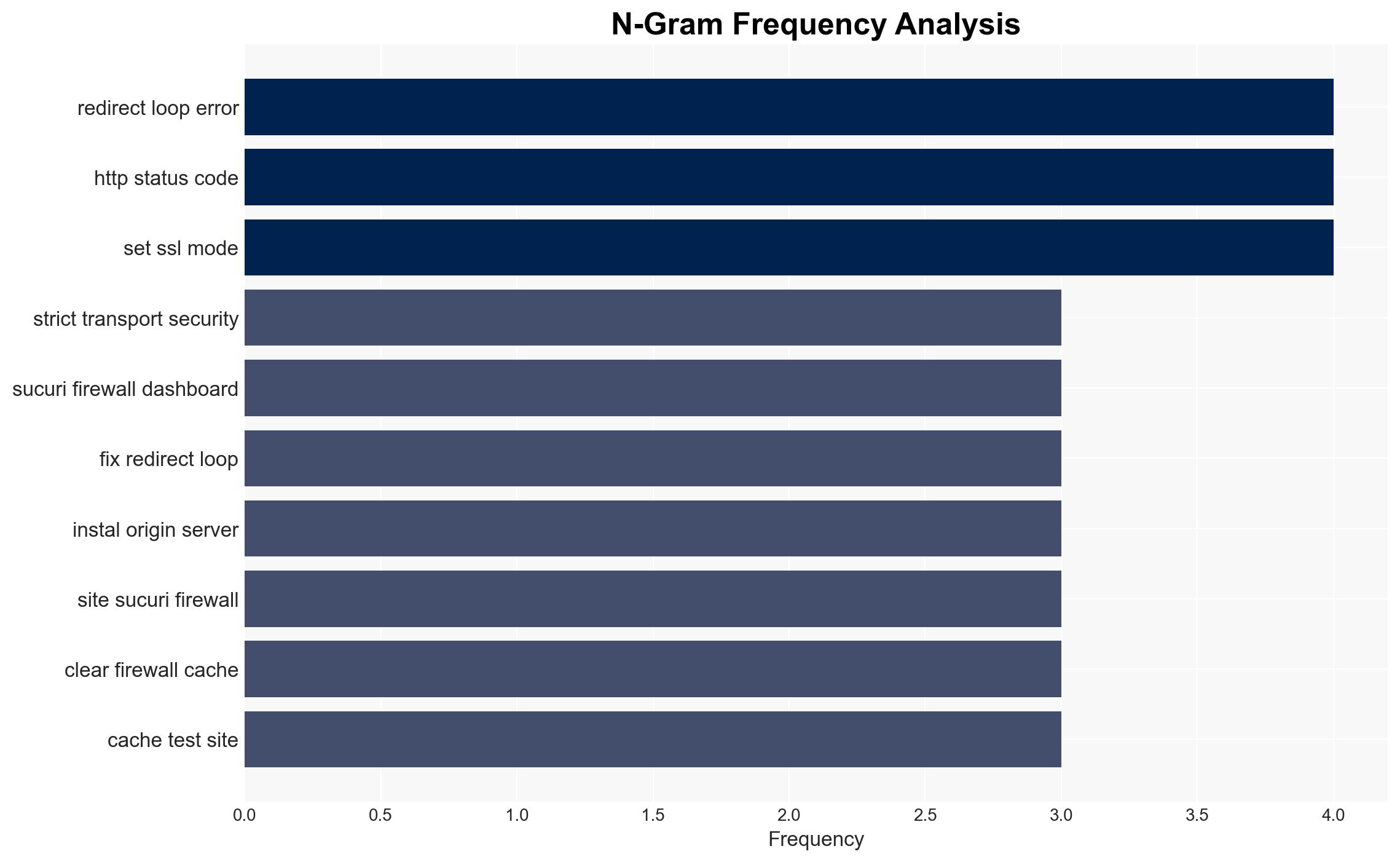How to Fix the ERRTOOMANYREDIRECTS Error – Sucuri.net
Published on: 2025-11-13
AI-powered OSINT brief from verified open sources. Automated NLP signal extraction with human verification. See our Methodology and Why WorldWideWatchers.
Intelligence Report: How to Fix the ERRTOOMANYREDIRECTS Error – Sucuri.net
1. BLUF (Bottom Line Up Front)
The most supported hypothesis is that the ERRTOOMANYREDIRECTS error is primarily caused by misconfigured website settings, particularly involving improper redirect rules or HTTPS settings. The confidence level in this hypothesis is moderate due to the commonality of such errors and the structured nature of web protocols. Recommended actions include reviewing and correcting redirect configurations and ensuring proper HTTPS settings to prevent infinite redirect loops.
2. Competing Hypotheses
Hypothesis 1: The error is caused by misconfigured redirect settings on the web server, leading to an infinite loop.
Hypothesis 2: The error is due to a client-side issue, such as browser cache or cookies, causing the browser to misinterpret redirect instructions.
Hypothesis 1 is more likely given the technical nature of redirect errors and the structured process of server-side configurations. Client-side issues are less common in causing persistent redirect loops across multiple browsers.
3. Key Assumptions and Red Flags
Assumptions: It is assumed that the server configurations are the primary source of the error, and that browser behavior is consistent across different platforms.
Red Flags: Potential bias in assuming server-side issues without considering client-side factors. Lack of direct evidence from server logs or configurations.
Deception Indicators: None identified, as the issue is technical and lacks a human adversary component.
4. Implications and Strategic Risks
Persistent redirect errors can lead to significant user frustration and loss of website traffic, impacting business operations and customer satisfaction. If unresolved, this could escalate to reputational damage and economic loss. In a broader cybersecurity context, misconfigured redirects could be exploited for phishing or other malicious activities.
5. Recommendations and Outlook
- Review and correct server-side redirect rules, ensuring they are properly configured to avoid loops.
- Verify HTTPS settings and ensure proper implementation of HSTS to prevent insecure redirects.
- Clear browser cache and cookies to eliminate client-side factors.
- Best-case scenario: Quick resolution of the error through server configuration adjustments, restoring normal website functionality.
- Worst-case scenario: Persistent errors lead to significant traffic loss and potential exploitation by malicious actors.
- Most-likely scenario: The issue is resolved through technical adjustments, with minimal long-term impact.
6. Key Individuals and Entities
No specific individuals are identified in the source text. The focus is on technical roles such as web administrators and IT support teams.
7. Thematic Tags
Cybersecurity, Web Development, IT Support, User Experience
Structured Analytic Techniques Applied
- Adversarial Threat Simulation: Model and simulate actions of cyber adversaries to anticipate vulnerabilities and improve resilience.
- Indicators Development: Detect and monitor behavioral or technical anomalies across systems for early threat detection.
- Bayesian Scenario Modeling: Quantify uncertainty and predict cyberattack pathways using probabilistic inference.
Explore more:
Cybersecurity Briefs ·
Daily Summary ·
Methodology





